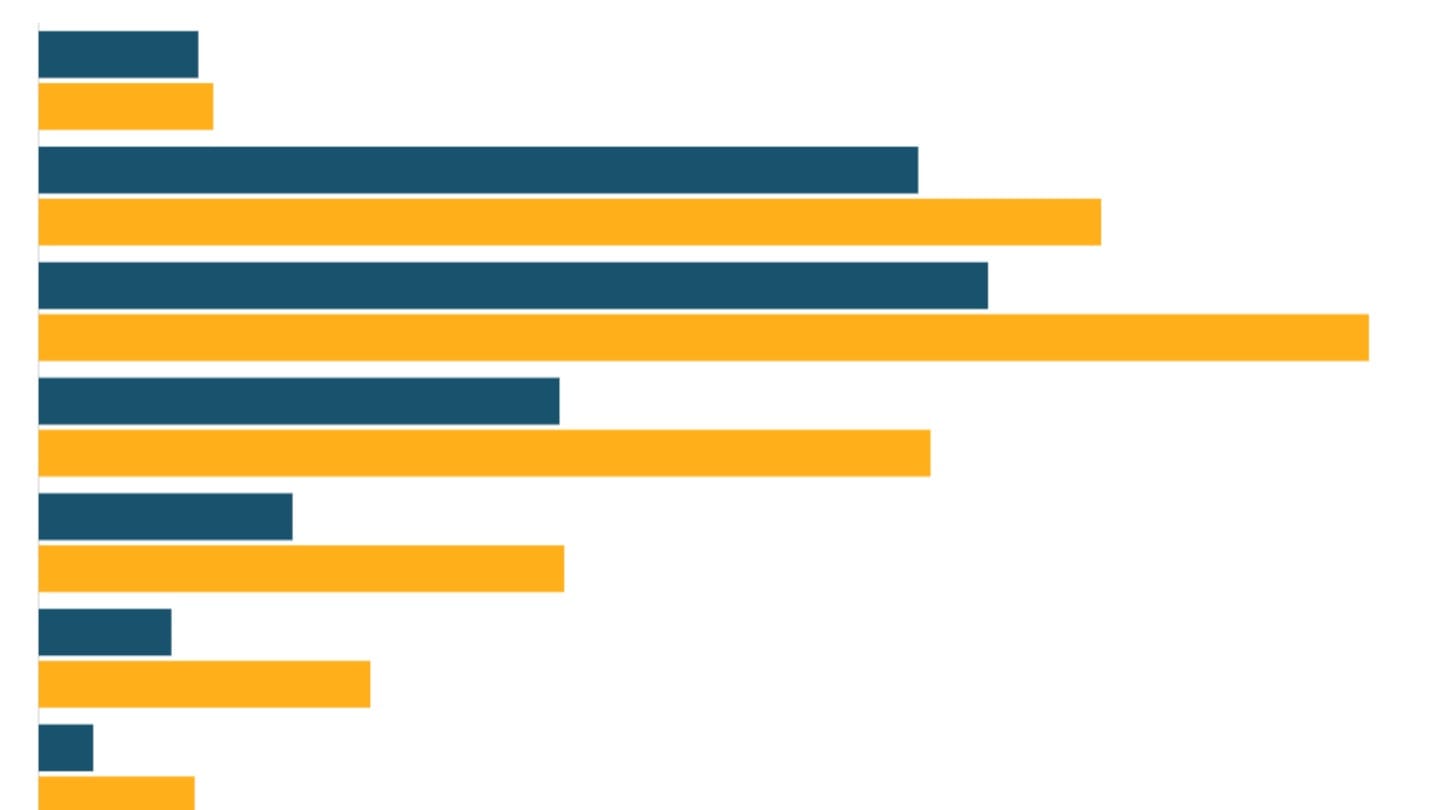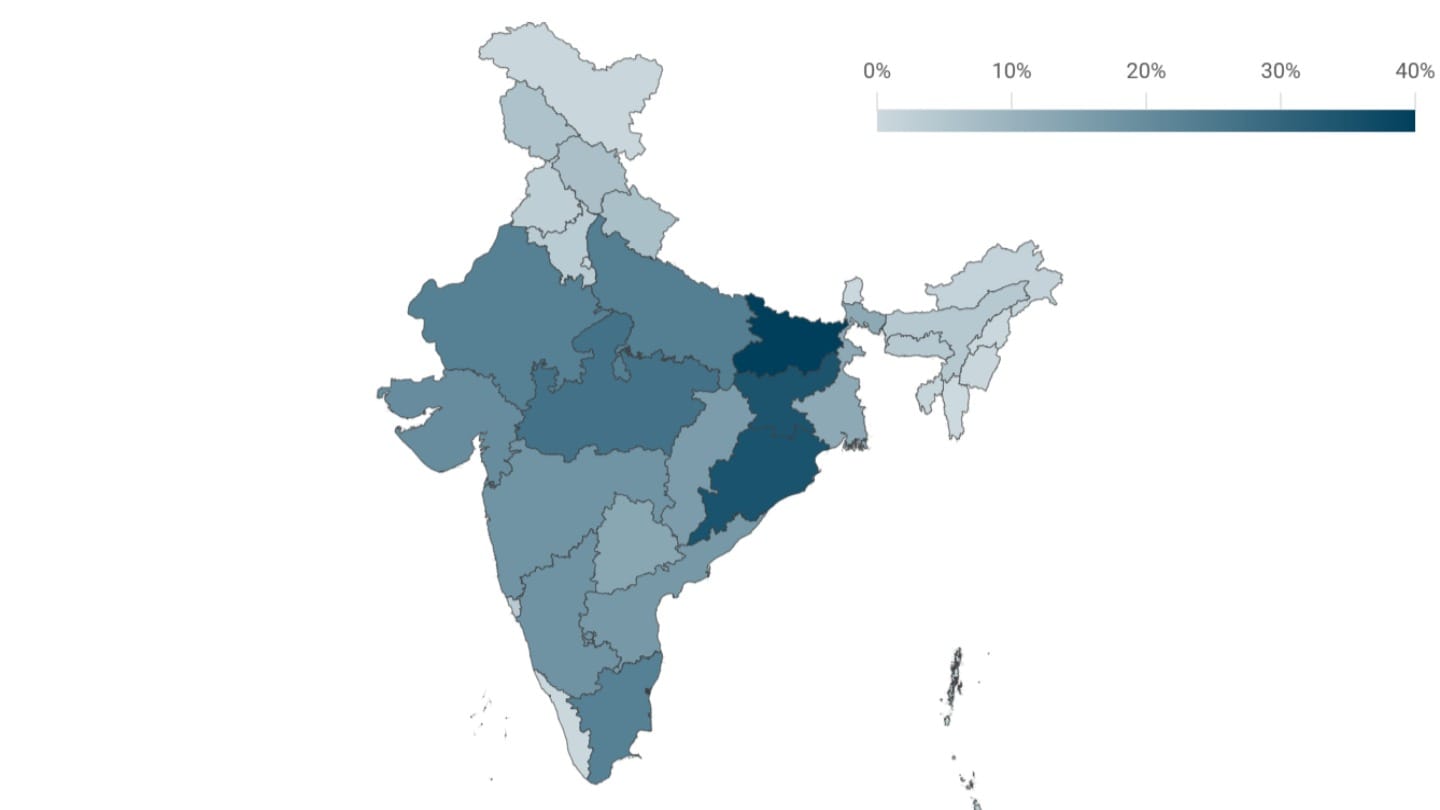Access to drinking water
Most Indians now have access to clean drinking water, but progress on tap water has been slower.
Access to clean drinking water is one of the most important conditions for human health. Most Indians now have access to clean drinking water, but progress on tap water has been slower.
Improved access to drinking water
Over time, the definition of access to water has expanded to cover at least basic aspects of the quality of this water. The World Bank defines people with access to "basic drinking water services" as people using safely managed water services as well as those using basic water services, which is drinking water from an improved source (piped water, boreholes or tubewells, protected dug wells, protected springs, and packaged or delivered water) provided the collection time is not more than 30 minutes for a round trip[1].
At the beginning of the 2000s, fewer than eight in ten Indians had access to basic drinking water, lower than in neighbouring Sri Lanka, and lower than the world average. Over the last two decades, India has made steady progress. Nearly 95% of Indian households now have access to basic drinking water, a rate of progress that has surpassed the world's on average. Access to basic drinking water is better in urban than in rural areas in India.
Drinking water by source
Data on access to drinking water in India comes from the National Sample Survey which in various rounds has asked a large representative sample of Indian households what their principal source of drinking water is. The most recent such data comes from the 79th round of the survey, conducted in 2022-23, where over a million people across all states were surveyed[2].
Hand pumps or tube wells are the single largest source of drinking water for rural Indians, while piped water is the biggest source for urban Indians. Bottled water has become a key source of drinking water, now serving 15% of urban households
There are some key peculiarities at the state level. Handpumps or tubewells, meanwhile, serve 95% of rural Uttar Pradesh households, over 85% of rural Bihar households and 75% of West Bengal's rural households.
Bottled water (which includes home delivered cans of water) has become an important source of drinking water in the southern states; in Andhra Pradesh, Karnataka and Telangana in particular, over a quarter of households get their drinking water primarily from bottled water. In Kerala, on the other hand, household wells are the most important source of drinking water in both the rural and urban parts of the state.
Progress on tap water
While there has been overall progress on drinking water, tap water access has expanded only slowly in urban areas. Access to piped water is expanding in rural areas, but there is still a long way to go for tap water access to become widespread. NSS survey data finds that 40% of rural households used piped water as their primary source of drinking water as of 2023.
Ground-up survey data such as that used above can often illuminate who truly does use an asset or amenity in a way that top-down administrative data that exists as a by-product of government schemes may sometimes miss. Administrative data from a scheme to provide a tap water connection to every rural household reports that over 60% of rural households had a tap water connection in their homes by the middle of 2023.[3] However, gaps between this administrative data and household survey data indicate that providing tap water connections may not directly translate into households who get their drinking water primarily through tap water. The NSS data shows that just 30% of rural households had as their primary source of drinking water a tap in their own homes or yards.[4]
[1] World Development Indicators Glossary (World Bank)
[2] Comprehensive Annual Modular Survey, NSS 79th Round, 2022-23 (National Sample Survey Office)
[3] Annual Report 2023-24 (Government of India, Department of Drinking Water and Sanitation, Ministry of Jal Shakti)
[4] 13% of rural households use water that is piped into their houses as their principal source of drinking and 17% use water that is piped into their yard or plot. Another 1% use piped water from a neighbour, and 8% used water piped from a public tap or standpipe.




